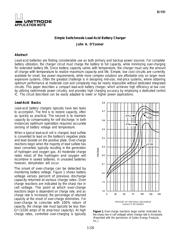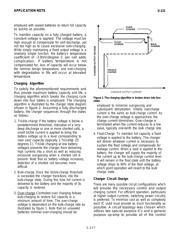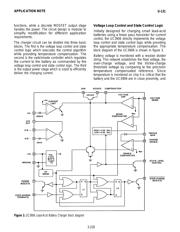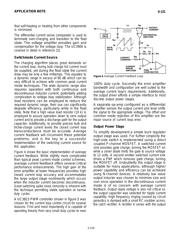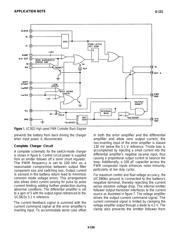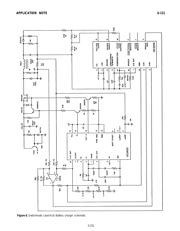下载

U-131
APPLICATION NOTE
Simple Switchmode Lead-Acid Battery Charger
John A. O’Connor
Abstract
Lead-acid batteries are finding considerable use as both primary and backup power sources. For complete
battery utilization, the charger circuit must charge the battery to full capacity, while minimizing over-charging
for extended battery life. Since battery capacity varies with temperature, the charger must vary the amount
of charge with temperature to realize maximum capacity and life. Simple, low cost circuits are currently
available for small, low power requirements, while more complex solutions are affordable only on larger more
expensive systems. Often the greatest challenge is in designing mid-size, mid-price systems, where obtaining
optimum performance at moderate cost and complexity may be nearly impossible without dedicated integrated
circuits. This paper describes a compact lead-acid battery charger, which achieves high efficiency at low cost
by utilizing switchmode power circuitry, and provides high charging accuracy by employing a dedicated control
IC. The circuit described can be easily adapted to lower or higher power applications.
Lead-Acid Basics
Lead-acid battery chargers typically have two tasks
to accomplish. The first is to restore capacity, often
as quickly as practical. The second is to maintain
capacity by compensating for self discharge. In both
instances optimum operation requires accurate
sensing of battery voltage and temperature.
When a typical lead-acid cell is charged, lead sulfate
is converted to lead on the battery’s negative plate
and lead dioxide on the positive plate. Over-charge
reactions begin when the majority of lead sulfate has
been converted, typically resulting in the generation
of hydrogen and oxygen gas. At moderate charge
rates most of the hydrogen and oxygen will
recombine in sealed batteries. In unsealed batteries
however, dehydration will occur.
The onset of over-charge can be detected by
monitoring battery voltage. Figure 1 shows battery
voltage verses percent of previous discharge
capacity returned at various charge rates. Over
charge reactions are indicated by the sharp rise in
cell voltage. The point at which over-charge
reactions begin is dependent on charge rate, and as
charge rate is increased, the percentage of returned
capacity at the onset of over-charge diminishes. For
over-charge to coincide with 100% return of
capacity, the charge rate must typically be less than
C/100
(1/100 amps of its amp-hour capacity). At high
charge rates, controlled over-charging is typically
PERCENT OF PREVIOUS DISCHARGE
CAPACITY RETURNED
Figure 1.
Over-charge reactions begin earlier (indicated by
the sharp rise in cell voltage) when charge rate is increased.
(Reprinted with the permission of Gates Energy Products,
Inc.,)
3-226


